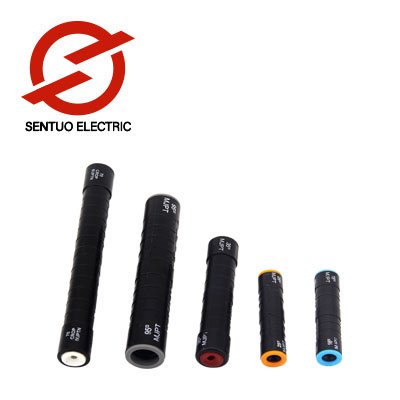Shielding Connections: Exploring Common Insulation Materials in Pre-Insulated Joint Sleeves
2024-01-22
Introduction:
In the intricate tapestry of electrical systems, the connection points represent crucial junctures where insulation plays a pivotal role. Pre-Insulated Joint Sleeves stand as guardians of these connections, employing carefully chosen insulation materials to ensure both electrical integrity and environmental resistance. This blog post delves into the common insulation materials used in Pre-Insulated Joint Sleeves and examines how they perform in terms of electrical insulation and resilience against environmental challenges.
1. Cross-Linked Polyethylene (XLPE):
- Robust Insulating Power: XLPE stands tall as a preferred insulation material, renowned for its robust dielectric properties.
- Electrical Insulation: XLPE provides excellent electrical insulation, preventing leakage and maintaining the integrity of connections.
- Thermal Stability: Its cross-linked structure enhances thermal stability, enabling Pre-Insulated Joint Sleeves to withstand elevated temperatures without compromising insulation performance.
2. Ethylene Propylene Diene Monomer (EPDM):
- Versatility and Resilience: EPDM is a versatile insulation material with a reputation for resilience against various environmental factors.
- Environmental Resistance: EPDM excels in resisting moisture, chemicals, and UV radiation, making it a suitable choice for Pre-Insulated Joint Sleeves used in diverse outdoor applications.
- Flexibility: The inherent flexibility of EPDM allows for easy conformity to cable contours, ensuring a snug fit for optimal insulation coverage.
3. Low Smoke Zero Halogen (LSZH) Compounds:
- Safety First: LSZH compounds prioritize safety by reducing the emission of smoke and toxic gases in the event of a fire.
- Environmental Responsibility: Pre-Insulated Joint Sleeves featuring LSZH materials align with environmental responsibility standards, making them suitable for applications where minimizing environmental impact is crucial.
4. Polyolefin Compounds:
- Balance of Properties: Polyolefin compounds strike a balance between electrical insulation and environmental resistance.
- Chemical and Moisture Resistance: These compounds exhibit resistance to chemicals and moisture, enhancing the durability of Pre-Insulated Joint Sleeves in challenging environments.
5. Fluoropolymer Insulation:
- Specialized Protection: In certain applications requiring specialized protection, fluoropolymer insulation materials may be employed.
- High-Temperature Resistance: Fluoropolymers excel in high-temperature resistance, ensuring that Pre-Insulated Joint Sleeves can perform reliably in demanding conditions.
6. Silicone Rubber:
- High-Temperature Performance: Silicone rubber is chosen for its exceptional high-temperature performance.
- Flexibility: Silicone rubber maintains flexibility across a wide temperature range, making it suitable for Pre-Insulated Joint Sleeves used in environments with variable thermal conditions.
7. UV-Resistant Formulations:
- Outdoor Endurance: UV-resistant formulations, often incorporated into insulation materials, enhance the outdoor endurance of Pre-Insulated Joint Sleeves.
- Sunlight Protection: The ability to resist UV radiation ensures that the sleeves maintain their structural and insulating integrity even with prolonged exposure to sunlight.
8. Halogen-Free Materials:
- Reducing Environmental Impact: Halogen-free insulation materials contribute to reducing the environmental impact of electrical installations.
- Compliance with Regulations: Pre-Insulated Joint Sleeves featuring halogen-free materials align with regulations aimed at minimizing the release of toxic substances during combustion.
9. Thermoplastic Elastomers (TPE):
- Flexibility and Resilience: TPE combines the flexibility of rubber with the processability of thermoplastics.
- Durable Insulation: TPE-based insulation provides durable insulation for Pre-Insulated Joint Sleeves, accommodating dynamic cable movements and maintaining electrical performance.
10. Elastomeric Compounds:
- Mechanical Protection: Elastomeric compounds offer mechanical protection in addition to electrical insulation.
- Resilience: These compounds enhance the resilience of Pre-Insulated Joint Sleeves, guarding against physical stress, abrasion, and potential damage.
Conclusion:
The choice of insulation materials in Pre-Insulated Joint Sleeves is a strategic decision that considers a delicate balance between electrical insulation and environmental resilience. Whether leveraging the robustness of XLPE, the versatility of EPDM, or the specialized properties of fluoropolymers, these materials collaborate to form a shield around critical connections. As we navigate the intricacies of electrical systems, the thoughtful selection of insulation materials in Pre-Insulated Joint Sleeves becomes a testament to the commitment to reliability, safety, and enduring performance in diverse electrical environments.



